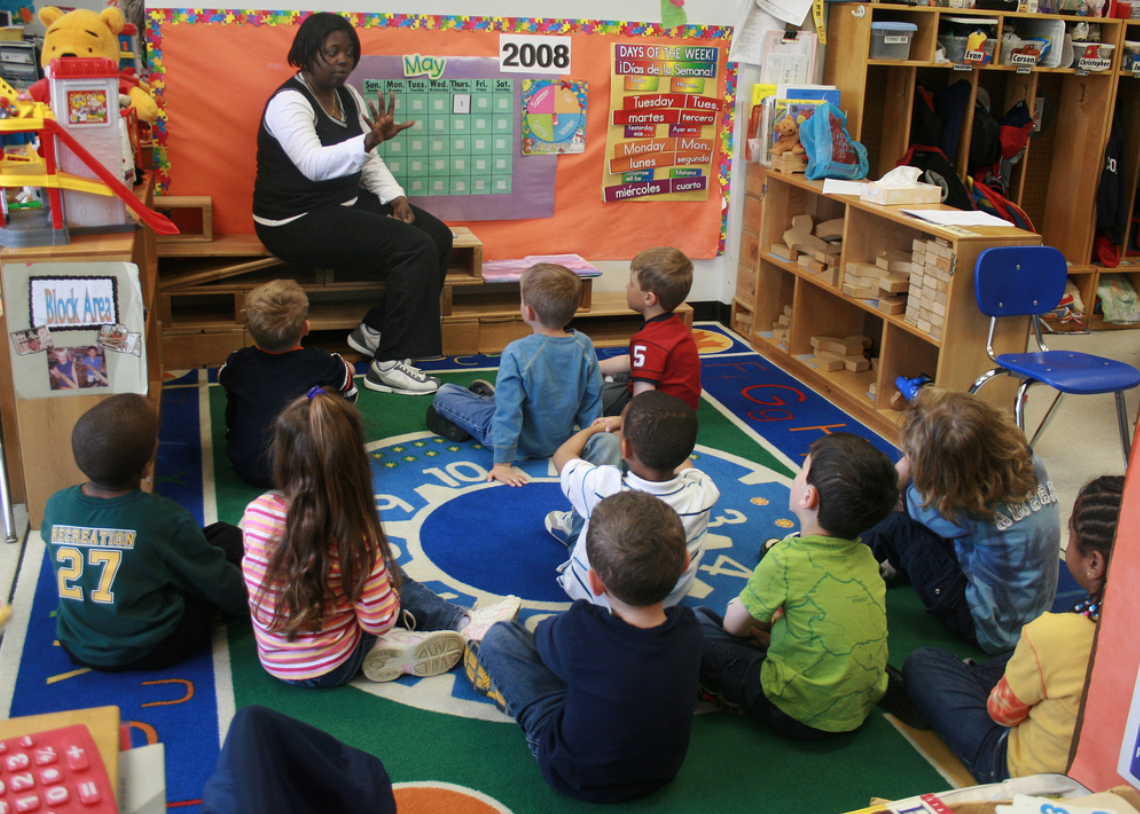There have been some positive signs as the country climbs out of the Great Recession. Recent numbers from the Census showed gains in both employment and median household income. But by other important measures, the recession seems to have had lasting impacts. A new study from a team of researchers, including Kinder Institute fellow and Rice University sociology professor Rachel Kimbro, reveals that more young children are living in high-poverty neighborhoods after the recession, a change that can also be linked to reduced school readiness.
Between 1998 and 2010, the percentage of kindergarten-age children living in low-poverty neighborhoods, where fewer than 14 percent of residents live below the poverty line, decreased from 64 percent to 56 percent, according to the study, co-authored by Sharon Wolf of the University of Pennsylvania and Katherine Magnuson with the University of Wisconsin. Significantly, kids from these high-poverty neighborhoods tend to start school about one year behind their peers, measured by standardized math and reading evaluations.
The analysis of nationally representative data sets for students entering kindergarten in 1998 and 2010 parallels other research documenting the suburbanization of poverty and the spread of poverty in the South and Midwest, which generally saw the largest increases in the number of neighborhoods where more than 40 percent of the population was living below the poverty line.
In addition to situating their work within this geography, the researchers also looked at the role of race and family income for the individual students, finding that white children and children whose families actually had incomes above the poverty line saw the biggest increases when it came to living in high-poverty neighborhoods. Despite gains among those populations, however, black children were still comparatively much more likely than white children to live in a high-poverty neighborhood, regardless of family income.
Even beyond the more-documented impact of family income on school readiness for young children, the study found that neighborhood context matters as well. Access to things like high-quality daycare, libraries, parks to play and explore, as well as the potential impact of living in a high-poverty neighborhood on a child's health, could all be part of what's driving the correlation, the researchers postulated.
"The family is definitely the most important context for a kid, that family income is going to make a really big difference," said Kimbro, "but what we're arguing is that the community a kid lives in adds another layer to their experiences and we can see that in the data; even when we control for what their family income is, there is still an effect of living in a high-poverty neighborhood and it’s a strong effect."
Given the significance of a student's neighborhood context, policies and programs should seek to not just target individuals but whole neighborhoods, argued Kimbro. "Schools already use family poverty to identify kids who are at-risk but we say, 'Actually, neighborhood characteristics and community characteristics are something schools might want to use to target kids too," she said.
Houston's Harris County has seen an increase in the number of census tracts considered high-poverty and much of it has been in the suburbs, according to a Kinder Institute analysis. Between 1980 and 2010, the percentage of high-poverty census tracts in Harris County more than quadrupled to 39 percent, well above the national rate of 20 percent. At the same time, nearly a third of the county's census tracts transitioned from having low poverty rates to high poverty rates from 1980 to 2010, according to that report.
Looking at the national picture, Kimbro said, "The recovery in these places is going to be harder because of the depths of poverty to which those neighborhoods went after the recession. These kids are now in middle school at this point; how are they doing?"

